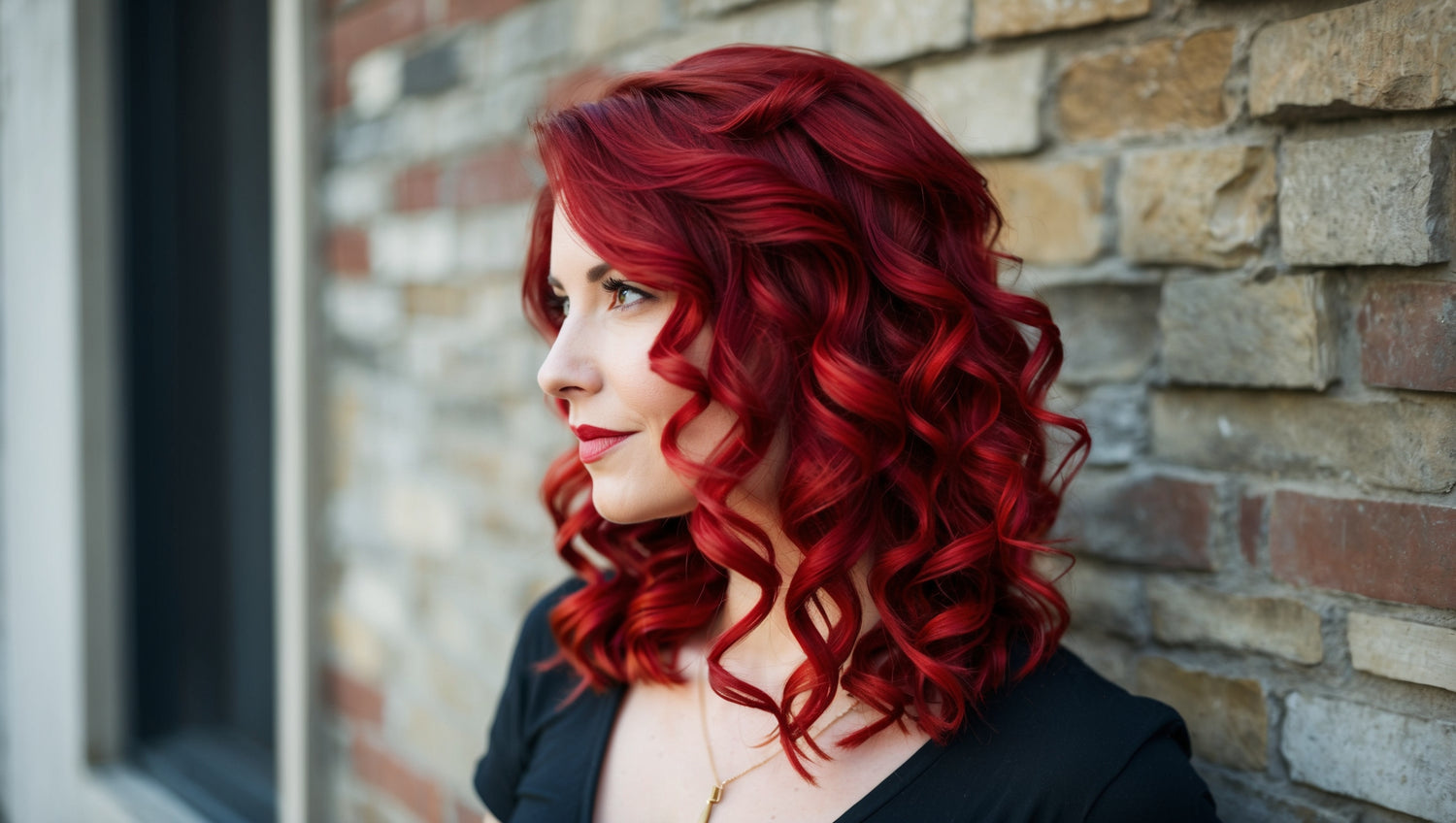THE GENTLE ALTERNATIVE: TINTING HAIR INSTEAD OF COLORING
When summer comes and you want to treat yourself, a new look is essential. However, there is no room on your head for brittle and damaged hair: We recommend using tint as a suitable alternative to permanent hair coloring.
THE KEY DIFFERENCE
Tints have a reputation for causing less damage to your hair than traditional coloring. The reason for this is that they each work differently. The artificial pigments of a tint lie around the hair, while oxidation hair colors penetrate into the interior of the hair. There they settle in the fiber layer and ensure a long (permanent) durability.
This means that tinting your hair is less stressful than coloring; or even bleaching. Since they don't need to swell the hair to penetrate, they use much lower concentrated hydrogen peroxide. But don't forget that this is still a chemical process. Depending on the type and initial condition, your hair may still react sensitively to tints or refuse to accept the color. However, there are solutions for this too and they are called: pre-pigmentation and direct removal.
Pre-pigmentation occurs when your hair is very difficult to color or tint due to its condition. This prevents the risk of not accepting the color or tint. This is the case, for example, with very damaged hair, but also with bristly, natural white or gray hair.
Direct-forming tints are those that do not require hydrogen peroxide at all to develop. The color that your hair should ultimately take on is already achieved by a direct draw without contact with H2O2 and oxygen. These are usually very colorful, “bright” shades, but brown or blonde shades are no longer uncommon.
TINTING INSTEAD OF COLORING - THE PLEASANT COMPROMISE
Ultimately, you have to make a decision: Oxidation hair colors put a lot more strain on your hair, but impress with their longer durability and color intensity. Tints are generally less aggressive, but need to be refreshed every few weeks depending on the desired color; Direct migrants sometimes several times a month. If you just want to try out a new color, a tint is the best choice.
THE RIGHT CARE
You should use conditioners with caution when coloring or tinting: classic conditioners often have a very acidic pH value. They tend to pull red artificial pigments out of the hair - especially if they just collect around the hair instead of penetrating it. For colors and tints with red nuances - regardless of the extent - you should therefore prefer appropriately pigmented conditioners. Pigmented conditioners for after washing your hair belong in every household where hair is colored.
In general, pigmented hair care products are always recommended for tinted hair; also in other color shades. If you have treated your hair with oxidation hair dyes, they usually don't need refreshing unless it's not a shade of red. Alternatively, however, the intensity can be particularly emphasized by gloss; with special color care products such as the Color Lock Conditioner from MeMademoiselle. In the case of both tints and hair colorations with H2O2, you can keep the color fresh without putting additional strain on your hair.






